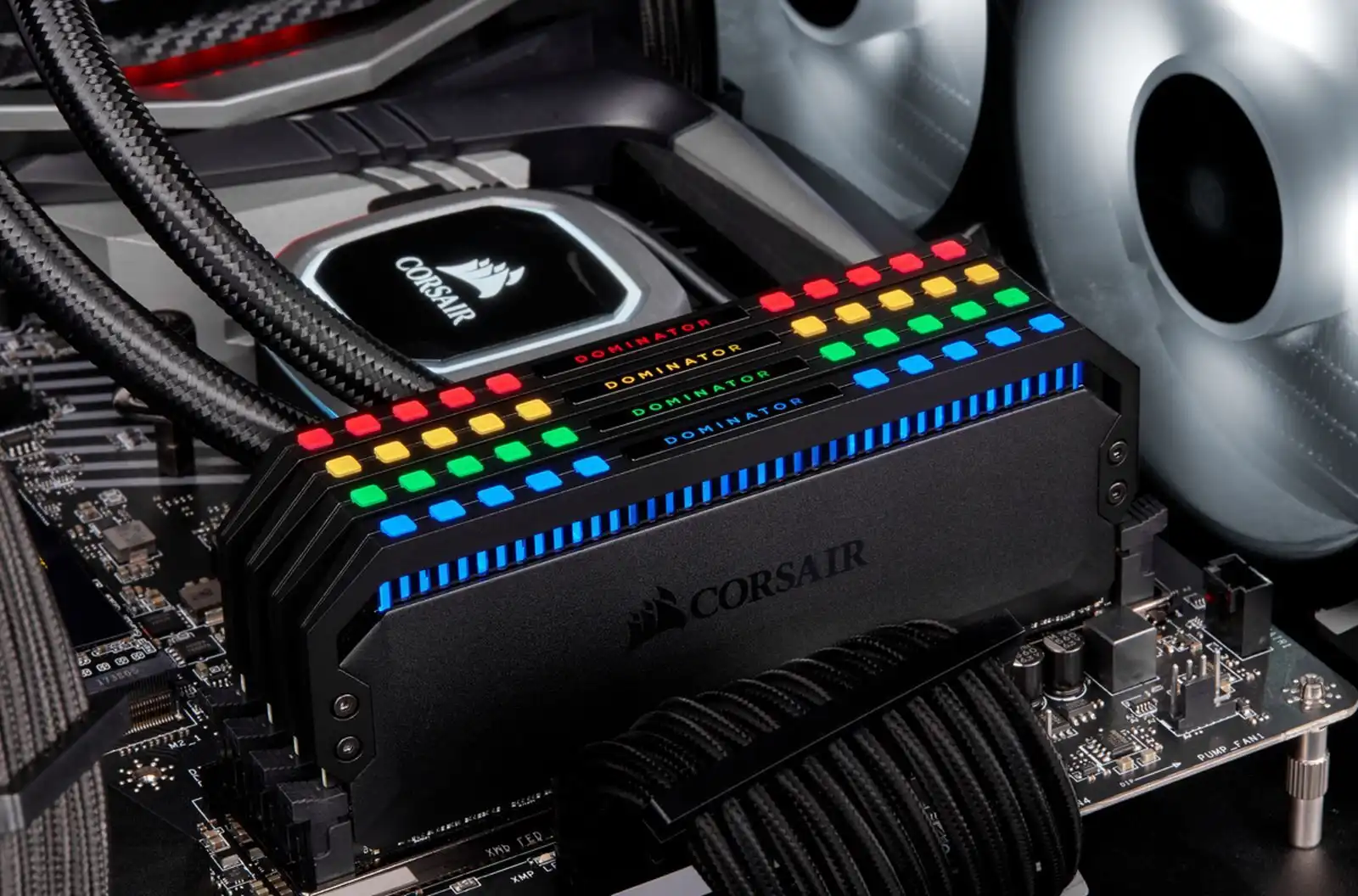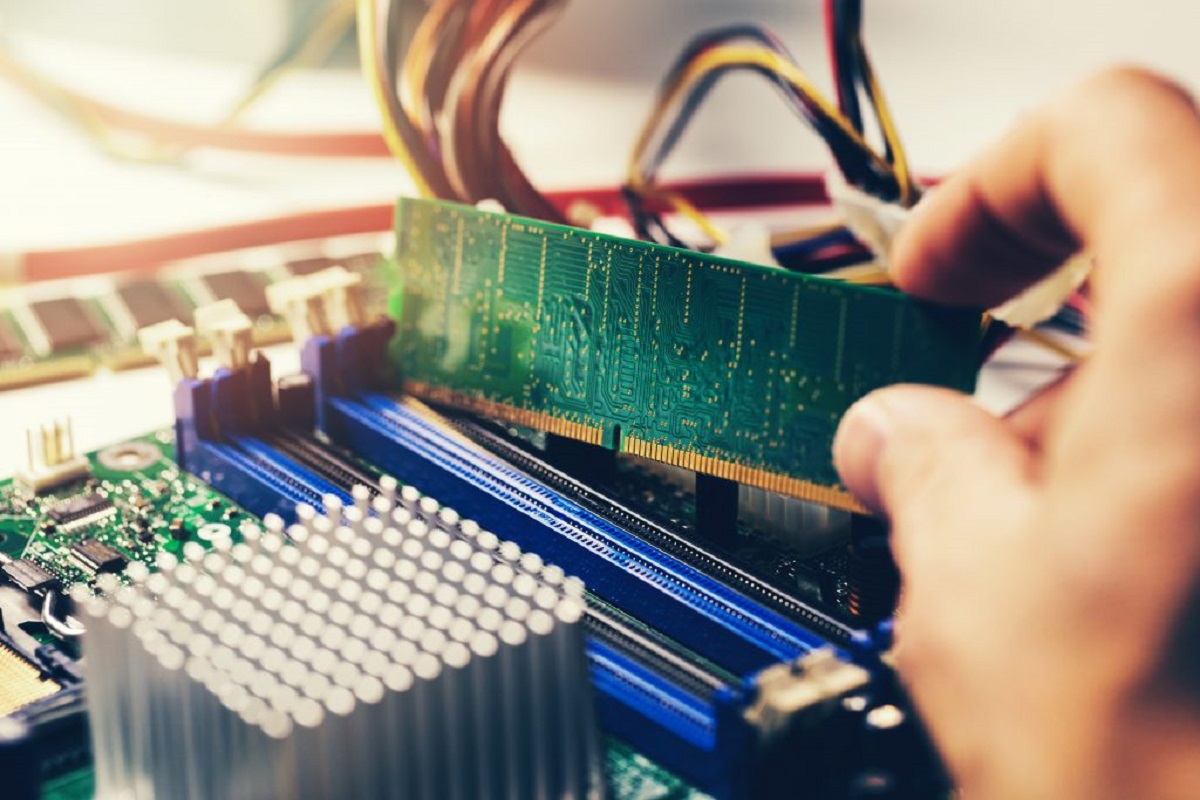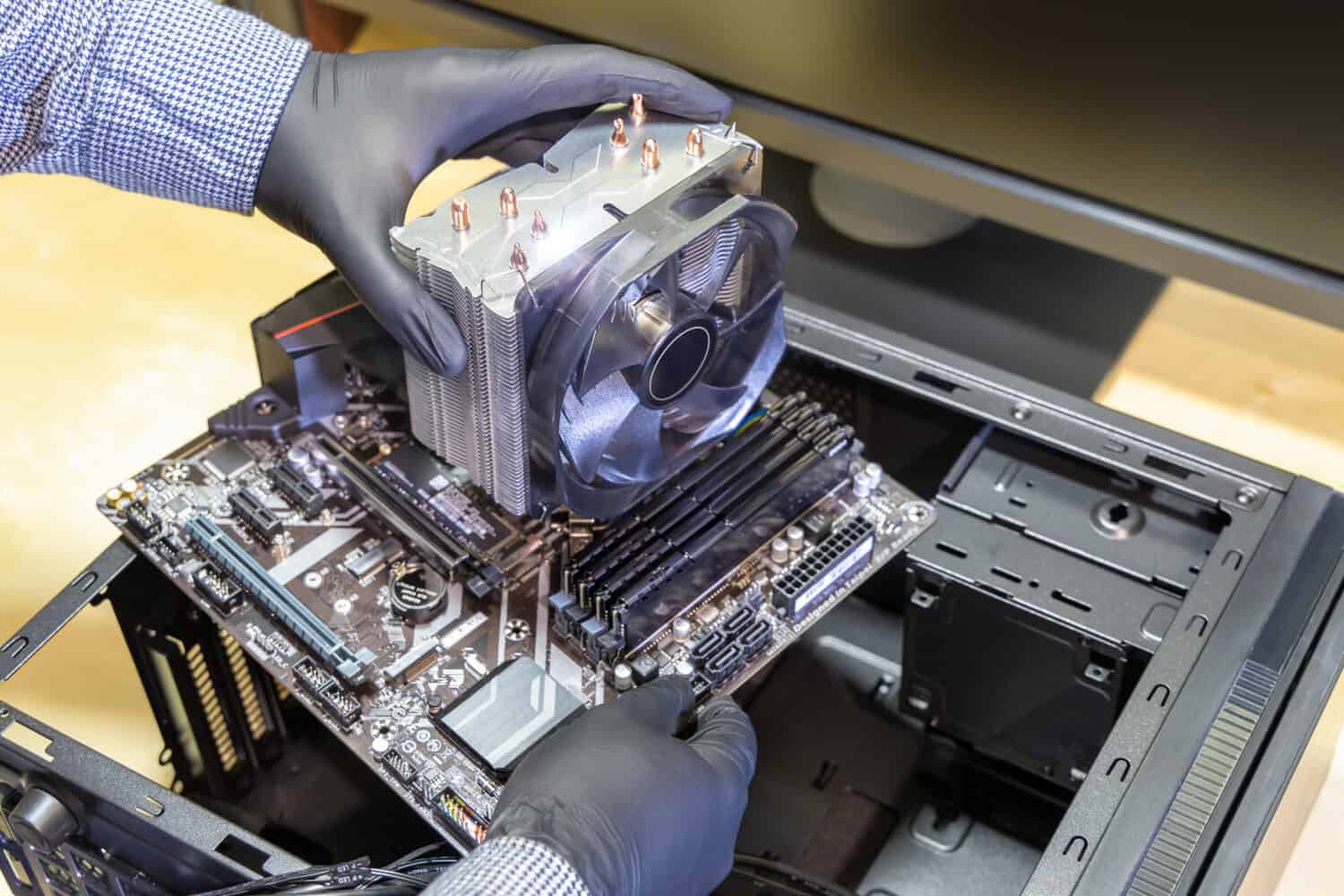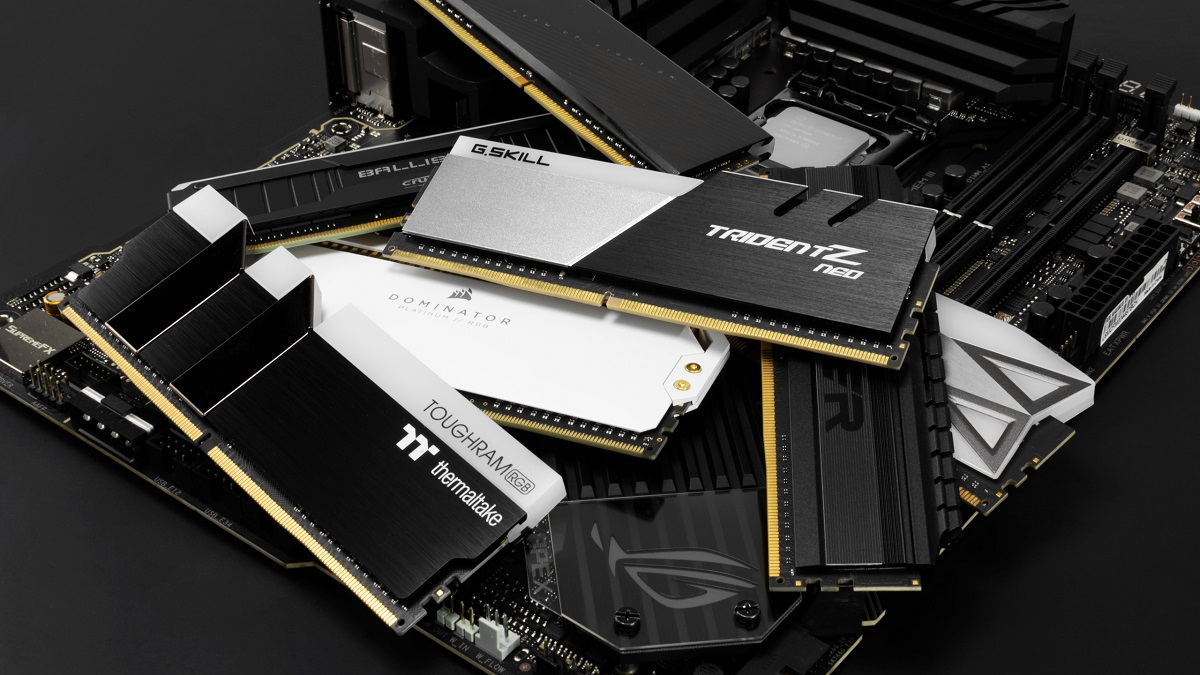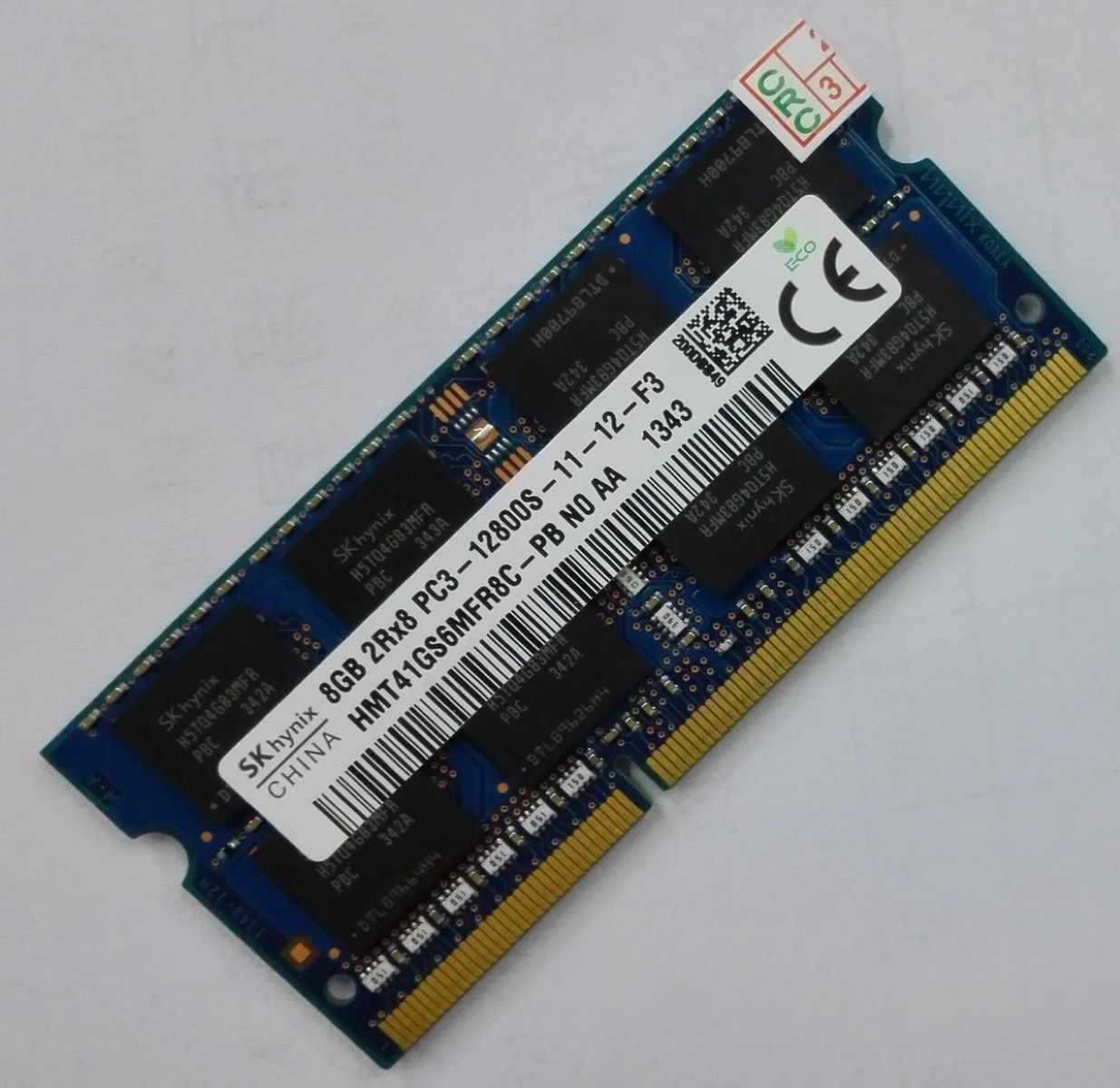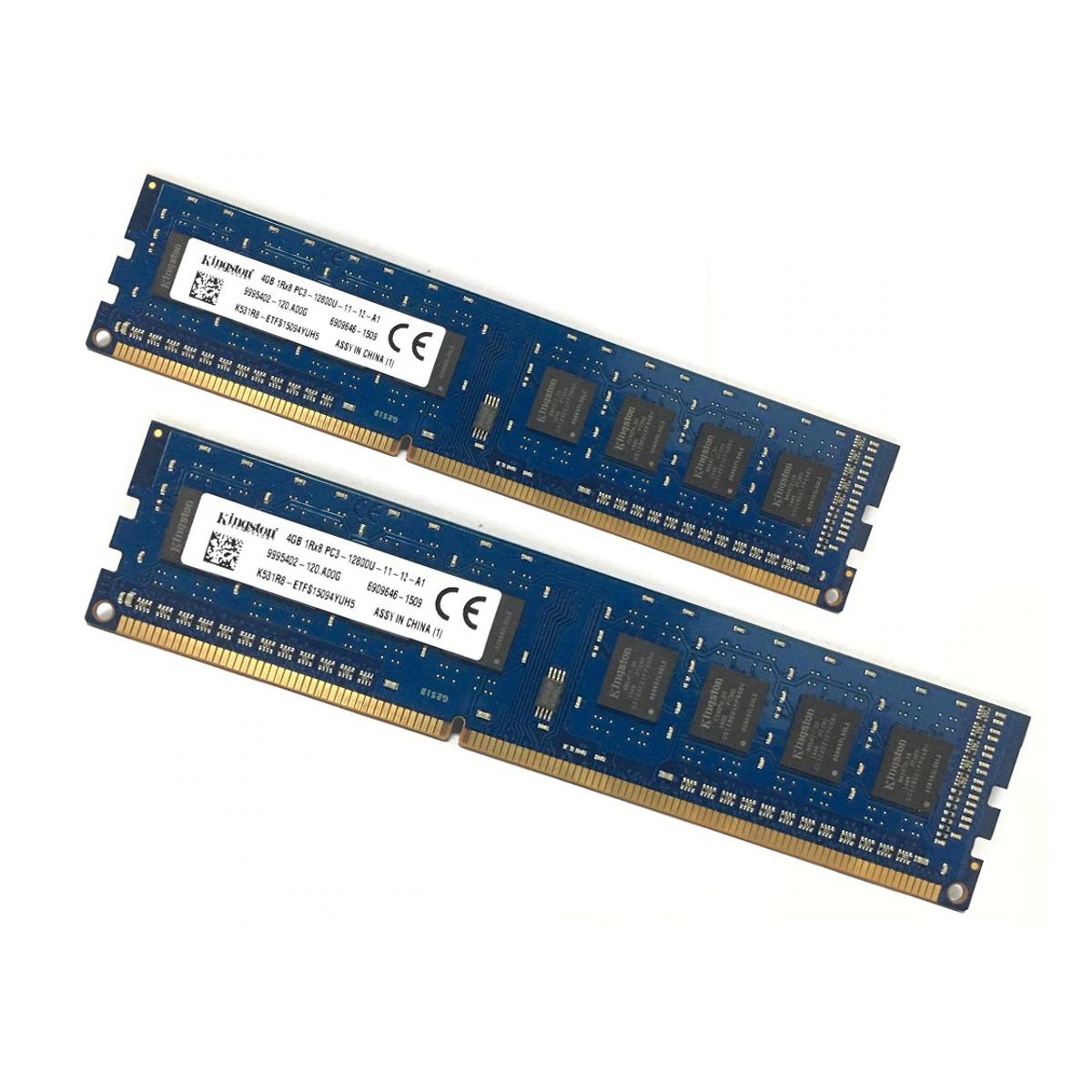Introduction
Welcome to the world of computer hardware, where every component plays a crucial role in the overall performance of your system. When it comes to upgrading or replacing your computer’s RAM (Random Access Memory), compatibility is key. But how do you know if a RAM module is compatible with your PC?
RAM is an essential component that allows your computer to quickly access and store data that is actively being used. It serves as temporary storage for the operating system, applications, and files, allowing your computer to multitask efficiently.
Upgrading your RAM can significantly improve your system’s performance, whether you’re a gamer looking for smoother gameplay or a professional needing to run resource-intensive software. However, not all RAM modules are compatible with every computer. It’s important to ensure that the RAM you choose is correctly matched to your system’s specifications.
In this guide, we will go through the key factors that determine RAM compatibility and provide you with the necessary knowledge to make an informed decision when upgrading or replacing your RAM.
What is RAM and why is it important?
RAM, or Random Access Memory, is a type of computer memory that provides temporary storage space for data that is actively being used by the computer’s CPU (Central Processing Unit). It is a vital component for the efficient functioning of a computer system.
Unlike a computer’s hard drive, which stores data for the long term, RAM stores data that is currently in use by the computer’s operating system, applications, and files. When you open a program or file, it is loaded into the RAM so that the CPU can access it quickly. This allows for faster and more efficient processing of tasks.
RAM plays a crucial role in determining the overall speed and performance of your computer. The more RAM you have, the more data your computer can store and access quickly, resulting in faster program load times, smoother multitasking, and improved overall system responsiveness.
When you run multiple applications simultaneously or work with large files, RAM plays a vital role in ensuring that your computer can handle the workload efficiently. Insufficient RAM can lead to sluggish performance, frequent freezing or crashing of applications, and overall system instability.
RAM is also important for gaming enthusiasts. Many modern games require large amounts of RAM to run smoothly, especially those with detailed graphics and complex physics engines. Upgrading your RAM can result in smoother gameplay, reduced loading times, and an overall improved gaming experience.
In summary, RAM is a crucial component for the efficient functioning of your computer. It provides temporary storage for the data that is actively being used, allowing your CPU to access it quickly. Whether you’re multitasking, working with large files, or gaming, having an adequate amount of RAM is essential for optimal performance and responsiveness.
Understanding RAM compatibility
RAM compatibility refers to the ability of a RAM module to work seamlessly with your computer’s motherboard and other hardware components. The following factors play a crucial role in determining RAM compatibility:
Motherboard Specifications: Every motherboard is designed to support specific types and configurations of RAM. You need to check your motherboard’s documentation or manufacturer’s website to identify the compatible RAM types and capacities. It’s important to note that different motherboards support different generations of RAM (DDR, DDR2, DDR3, DDR4), so ensure that you choose RAM of the correct generation.
Operating System Compatibility: While RAM compatibility is primarily determined by the motherboard, you also need to consider the compatibility with your operating system. Some older operating systems may have limitations on the amount of RAM they can recognize and utilize. Make sure to check the documentation or system requirements of your operating system to ensure that your chosen RAM is compatible.
RAM Types and Form Factors: RAM modules come in different types, such as DDR, DDR2, DDR3, and DDR4. Each type has its own specifications, including the number of pins and voltage requirements. Additionally, RAM modules also come in different form factors, such as DIMM (Dual In-Line Memory Module) and SO-DIMM (Small Outline Dual In-Line Memory Module). Ensure that you choose a RAM type and form factor that is supported by your motherboard.
RAM Speed and Latency: RAM speed, also known as frequency, refers to how quickly the data can be accessed and transferred by the RAM module. Latency, on the other hand, refers to the delay between a request to access data and the data being available. Both of these factors can impact the overall performance of your computer. It’s essential to choose RAM modules that are compatible with your motherboard’s supported speeds and latency timings.
Maximum RAM Capacity: Each motherboard has a maximum limit on the amount of RAM it can support. It’s crucial to check your motherboard’s specifications to determine the maximum RAM capacity it can handle. Exceeding the maximum limit may result in the RAM not being recognized or utilized by your system.
Understanding RAM compatibility is essential to ensure a successful upgrade or replacement of your RAM modules. By considering factors such as motherboard specifications, operating system compatibility, RAM types and form factors, RAM speed and latency, and maximum RAM capacity, you can choose RAM modules that are compatible with your system and maximize its performance.
Checking the motherboard specifications
When determining the RAM compatibility with your PC, it is essential to check the specifications of your motherboard. The motherboard serves as the main hub that connects all the hardware components in your computer, including the RAM. The following steps will help you check the motherboard specifications:
1. Identifying the motherboard model: Start by identifying the specific model of your motherboard. You can do this by checking the documentation that came with your computer or by looking for the model number printed directly on the motherboard itself. If you’re unable to locate the model number physically, you can use system information utilities in your operating system to identify it.
2. Visiting the manufacturer’s website: Once you have identified the motherboard model, visit the manufacturer’s website. Look for the support section or downloads section, where you can find specifications and documentation for your specific motherboard model.
3. Locating the RAM specifications: In the motherboard specifications, there should be a section dedicated to RAM specifications. This section will provide details about the types of RAM supported (DDR, DDR2, DDR3, DDR4), the maximum RAM capacity, the number of RAM slots available, and the supported RAM speeds and latencies.
4. Matching the RAM specifications: Compare the RAM specifications provided by the motherboard with the RAM modules you are considering. Make sure that the RAM type, capacity, speed, and latency are compatible with the motherboard’s specifications.
5. Checking for additional requirements: Some motherboards have specific requirements for certain RAM configurations, such as dual-channel or quad-channel memory setups. Make sure to check if your chosen RAM configuration aligns with any additional requirements specified in the motherboard’s documentation.
By carefully checking the motherboard specifications, you can ensure that you choose RAM modules that are compatible with your PC. It is important to note that RAM compatibility can vary even within the same motherboard model, so always refer to the official documentation provided by the motherboard manufacturer for the most accurate and up-to-date information.
Compatibility with operating system
When considering RAM compatibility for your PC, it’s crucial to ensure that the chosen RAM modules are compatible with your operating system. While RAM compatibility is primarily determined by the motherboard, the operating system may have its own limitations and requirements. Here are some key factors to consider when checking compatibility with the operating system:
1. System requirements: Review the system requirements of your operating system to ensure that the RAM capacity falls within the supported range. Older operating systems may have limitations on the maximum amount of RAM they can recognize and utilize. Check the official documentation or the website of the operating system to find the recommended RAM capacity for optimal performance.
2. 32-bit vs. 64-bit: Determine whether your operating system is 32-bit or 64-bit. 32-bit operating systems can address and utilize a maximum of 4GB of RAM, even if you have more installed. On the other hand, 64-bit operating systems have significantly higher RAM capacity limits. Ensure that your chosen RAM modules are compatible with the bit version of your operating system.
3. Memory management: Different operating systems have varying memory management capabilities. Some operating systems may handle RAM speed and latency differently, which can affect overall system performance. Research the specific considerations for your operating system and ensure that the chosen RAM modules are optimized for compatibility.
4. Compatibility with software requirements: If you use specific software or applications that have RAM requirements, check their compatibility with the chosen RAM modules. Some resource-intensive software may have specific RAM speed or capacity recommendations. Ensure that the chosen RAM modules meet those requirements to ensure smooth running of the software.
5. Updates and drivers: Keep your operating system up to date with the latest updates and drivers. Operating system updates often include improvements and fixes for RAM-related issues. Ensure that you have the latest updates installed to ensure optimal compatibility and performance with your chosen RAM modules.
By considering the compatibility with your operating system, you can ensure that the RAM modules you choose will work seamlessly with your system. Check the system requirements, the bit version of your operating system, memory management considerations, compatibility with required software, and keep your operating system updated to ensure smooth and efficient performance with your chosen RAM modules.
RAM types and form factors
When it comes to RAM compatibility, it’s essential to consider not only the type of RAM but also its form factor. RAM modules come in different types and form factors, and it’s crucial to choose ones that are compatible with your motherboard. Here’s what you need to know about RAM types and form factors:
1. RAM Types: RAM modules are categorized into different generations, each with its own specifications. The most common types of RAM are DDR (Double Data Rate), DDR2, DDR3, and DDR4. Each generation offers improvements in terms of speed and performance. It’s important to check your motherboard’s specifications to determine which RAM generation it supports.
2. Form Factors: RAM modules also come in different physical sizes called form factors. The two main form factors are DIMM (Dual In-Line Memory Module) and SO-DIMM (Small Outline Dual In-Line Memory Module). DIMM is the standard size used in desktop computers, while SO-DIMM is primarily used in laptops and smaller form factor systems. Ensure that you choose the form factor that is compatible with your motherboard’s RAM slots.
3. Number of Pins: RAM modules have a varying number of pins depending on the generation and form factor. DDR and DDR2 modules typically have 184 pins for DIMMs and 200 pins for SO-DIMMs. DDR3 modules have 240 pins for both DIMMs and SO-DIMMs. DDR4 modules have 288 pins for DIMMs and 260 pins for SO-DIMMs. Make sure to check the number of pins supported by your motherboard to ensure compatibility with the RAM modules.
4. Voltage Requirements: Different RAM modules may have different voltage requirements. DDR3 and DDR4 modules, for example, typically operate at 1.35V or 1.5V, while some low-voltage modules may operate at 1.2V. It’s crucial to check the voltage requirements of your motherboard to ensure compatibility with the RAM modules you choose.
5. ECC vs. Non-ECC: ECC (Error-Correcting Code) RAM is a type of RAM that can detect and correct certain types of memory errors. Non-ECC RAM, on the other hand, does not have error-correcting capabilities. ECC RAM is generally used in servers and workstations that require high reliability. Check your motherboard’s specifications to determine whether it supports ECC or non-ECC RAM.
By understanding the different RAM types and form factors, you can choose the appropriate modules that are compatible with your motherboard. Check the RAM type (DDR, DDR2, DDR3, DDR4), form factor (DIMM or SO-DIMM), number of pins, voltage requirements, and ECC/non-ECC support to ensure that the RAM modules you choose are fully compatible with your system.
Understanding RAM speed and latency
RAM speed and latency are important factors to consider when determining RAM compatibility and performance. They affect how quickly the data can be accessed and transferred by the RAM module. Let’s dive deeper into understanding RAM speed and latency:
RAM Speed: RAM speed, also known as frequency, represents the rate at which the RAM module can transfer data. It is measured in megahertz (MHz) and indicates how many million cycles per second the RAM can perform. Higher RAM speeds result in faster data transfer and can contribute to better overall system performance. However, the RAM speed must be within the supported range specified by your motherboard. Check your motherboard’s specifications to determine the supported RAM speeds.
RAM Latency: RAM latency, often referred to as CAS latency (Column Address Strobe latency), is the delay that occurs between a request for data and the actual retrieval of that data from the RAM module. It is measured in clock cycles, and lower latency values indicate faster access times. RAM modules with lower CAS latency values provide quicker response times and can improve system performance, especially in tasks that require frequent access to data. However, it’s important to note that the impact of RAM latency on overall system performance may be minimal for everyday tasks.
Timing Numbers: RAM speed and latency are expressed through timing numbers such as CL (CAS Latency), tRCD (RAS to CAS Delay), tRP (Row Precharge Time), and tRAS (Row Active Time). These timings represent different delays related to accessing and retrieving data from the RAM module. Lower timing numbers indicate faster performance and are generally desired. However, the RAM module’s compatibility with your motherboard’s supported timing numbers is crucial. Check your motherboard’s specifications to ensure compatibility with the desired timing parameters.
Overclocking: Some users may be interested in overclocking their RAM modules to increase their performance beyond the specified limits. Overclocking involves running the RAM at higher speeds or lower latencies than the manufacturer’s recommendations. While overclocking can yield performance improvements, it should be done cautiously and with proper knowledge, as it can potentially cause system instability if not implemented correctly.
Compatibility Considerations: When choosing RAM modules, it’s vital to consider the compatibility of the RAM speed and latency with your motherboard. Ensure that the RAM modules’ speeds and latency timings are within the supported range specified by your motherboard. Mismatched or unsupported RAM speeds and latency timings can lead to system instability or even prevent the RAM module from being recognized altogether.
Understanding RAM speed and latency allows you to make informed decisions when selecting RAM modules for your computer. Consider your motherboard’s supported RAM speeds and latency timings, and ensure that the chosen RAM modules are compatible. Achieving the right balance between RAM speed and latency can lead to optimal system performance and responsiveness.
Identifying the maximum RAM capacity
When determining RAM compatibility, it is important to identify the maximum RAM capacity that your computer can support. This maximum limit is determined by your computer’s motherboard and is an essential factor to consider when upgrading or replacing your RAM modules. Here’s how you can identify the maximum RAM capacity:
1. Consult the motherboard documentation: The motherboard documentation or manual is a valuable resource for identifying the maximum RAM capacity. It typically provides detailed information about the supported RAM capacities and configurations. Look for sections or specifications that outline the maximum amount of RAM that your motherboard can accommodate.
2. Check the manufacturer’s website: If you no longer have the physical documentation, visit the manufacturer’s website for your motherboard. Manufacturers usually provide detailed information about their products, including maximum RAM capacities. Look for the support or specifications section of the website, and search for your motherboard model to find the maximum RAM capacity.
3. Use system information tools: Operating systems often provide built-in tools to check system information, including the maximum RAM capacity. For example, in Windows, you can use the System Information tool or the Task Manager to find the installed RAM and the maximum supported capacity. Keep in mind that these tools may only provide basic information, and it’s important to cross-check with the motherboard documentation or manufacturer’s website for accurate and specific details.
4. Consider the number of RAM slots: Max RAM capacity can also depend on the number of RAM slots available on your motherboard. Each RAM slot has a limit on the maximum capacity it can support. If you have multiple RAM slots, multiply the maximum capacity per slot by the number of slots to determine the overall maximum RAM capacity. Ensure that you distribute the total capacity evenly across all slots if you plan to install multiple RAM modules.
5. Take note of any limitations: Some motherboards may have specific limitations or requirements that affect the maximum RAM capacity. For example, a motherboard may have a maximum capacity per slot, a maximum capacity for a single rank or dual rank modules, or may require specific configurations for reaching the maximum capacity. Carefully read the motherboard documentation or consult the manufacturer’s website to identify any such limitations.
By consulting the motherboard documentation, checking the manufacturer’s website, using system information tools, considering the number of RAM slots, and being aware of any limitations, you can identify the maximum RAM capacity that your computer can support. Knowing this information is crucial when selecting and upgrading your RAM modules to ensure optimal system performance.
Checking for additional requirements
When considering RAM compatibility, it’s important to be aware of any additional requirements that may exist beyond basic specifications. These additional requirements can vary depending on the motherboard and system configuration. Here are some factors to consider when checking for additional requirements:
Dual-Channel or Quad-Channel Memory: Some motherboards require specific memory configurations, such as dual-channel or quad-channel memory setups. Dual-channel memory involves installing pairs of identical RAM modules in specific slots to take advantage of increased memory bandwidth. Quad-channel memory requires installing four identical RAM modules in specific slots. Check the motherboard documentation to determine if your motherboard has any specific requirements for memory configuration.
Voltage Compatibility: RAM modules typically operate at a specific voltage, such as 1.35V or 1.5V. Some motherboards may have strict voltage requirements. Ensure that the voltage requirements of your chosen RAM modules align with the voltage supported by your motherboard.
Compatibility with CPU: In rare cases, certain CPU models may have limitations or compatibility issues with specific RAM modules. This may be due to the memory controller integrated into the CPU. It is important to research compatibility between your CPU and the chosen RAM modules or refer to the motherboard manufacturer’s CPU compatibility list.
BIOS Update: When upgrading or installing new RAM modules, it may be necessary to update the motherboard’s BIOS (Basic Input/Output System) firmware. BIOS updates often include optimizations and improvements for supporting new RAM modules and memory configurations. Check the motherboard manufacturer’s website for any available BIOS updates and instructions on how to perform the update.
Heat Spreaders or Cooling: Some RAM modules come with heat spreaders or cooling solutions to dissipate heat. These can be important for maintaining stable performance, especially when using high-speed RAM or when operating your system under heavy workloads. Ensure that your motherboard and system provide adequate space and cooling solutions to accommodate the chosen RAM modules.
Third-Party Software: Certain third-party software, such as overclocking utilities or monitoring tools, may require specific compatibility with your chosen RAM modules. Research the compatibility of such software with your RAM modules and ensure that they meet the necessary requirements.
Consult Manufacturer Support: If you have any doubts or specific questions about additional requirements for RAM compatibility, it is advisable to consult the motherboard manufacturer’s support resources. They can provide detailed information and guidance based on your specific motherboard model.
By checking for additional requirements related to memory configuration, voltage compatibility, CPU compatibility, BIOS updates, heat spreaders or cooling, third-party software compatibility, and consulting manufacturer support, you can ensure that your chosen RAM modules are fully compatible with your system and will function optimally.
Tools and resources for finding compatible RAM
When it comes to finding compatible RAM for your PC, there are several tools and resources available that can help you make an informed decision. These tools and resources provide valuable information about RAM compatibility, specifications, and recommendations. Here are some useful tools and resources for finding compatible RAM:
Motherboard manufacturer’s website: The motherboard manufacturer’s website is an excellent resource for finding compatible RAM. They often provide detailed documentation, specifications, and compatibility lists for RAM modules that are tested and verified to work with their motherboards. Visit the support or product page of the manufacturer’s website and search for the RAM compatibility section.
System Scanner tools: Many RAM manufacturers provide online system scanner tools that analyze your system’s hardware configuration and recommend compatible RAM modules. These tools detect your motherboard model, operating system, and current RAM configuration to generate a list of compatible RAM options. Examples of popular system scanner tools include Crucial Advisor and Kingston Memory Finder.
RAM Compatibility Checkers: Various third-party websites offer RAM compatibility checkers. These tools usually require you to input your motherboard model or select it from a drop-down list. The compatibility checker then provides information on compatible RAM modules based on your motherboard’s specifications. Ensure that these tools are reputable and reliable before relying on their results.
Online Forums and Communities: Participating in online forums and communities dedicated to computer hardware can provide useful insights into RAM compatibility. You can ask questions, share your system specifications, and receive recommendations from experienced users who have firsthand knowledge of compatible RAM modules.
RAM Manufacturer’s Website: Visiting the websites of reputable RAM manufacturers can offer valuable information about their product lines, compatibility, and specifications. Check their product pages and compatibility sections to find RAM modules that match your requirements and are certified compatible with a wide range of motherboards.
System Information Tools: Utility software, such as CPU-Z or HWiNFO, provides detailed information about your system’s hardware configuration. These tools can help you identify your motherboard model, current RAM modules, and their specifications. Use this information to find compatible RAM modules that match or improve upon the existing ones.
Consulting with Experts: If you are unsure about which RAM modules are compatible with your system, it’s always helpful to consult with computer hardware experts or professionals. They can provide personalized recommendations based on their knowledge and experience in the field.
By utilizing these tools and resources, you can simplify the process of finding compatible RAM for your PC. Whether you rely on motherboard manufacturer’s websites, system scanner tools, RAM compatibility checkers, online forums, or consulting with experts, these resources offer valuable assistance in making the right RAM selection for your specific system.
Conclusion
Choosing the right RAM for your PC is essential for optimal performance and compatibility. By understanding the various factors that determine RAM compatibility and considering the specifications of your motherboard, operating system, and other requirements, you can make an informed decision when upgrading or replacing your RAM modules.
Start by understanding the importance of RAM and its role in computer performance. RAM allows for quick access to data and can significantly impact system responsiveness and multitasking capabilities.
Next, familiarize yourself with the different types and form factors of RAM. Ensure that you choose RAM modules that are compatible with your motherboard’s supported types and physical slots.
RAM speed and latency should also be considered. Check your motherboard specifications for supported RAM speeds and ensure that the chosen modules match these requirements. Additionally, understand the impact of latency timings on system performance and choose RAM modules accordingly.
Identifying the maximum RAM capacity of your motherboard is crucial. Consult the motherboard documentation, visit the manufacturer’s website, or use system information tools to determine the maximum amount of RAM your system can support.
Keep in mind any additional requirements such as dual-channel memory configurations, voltage compatibility, CPU compatibility, BIOS updates, cooling solutions, and third-party software compatibility.
Finally, make use of tools and resources available to help find compatible RAM. This includes visiting the motherboard manufacturer’s website, using system scanner tools, checking RAM compatibility checkers, engaging in online forums and communities, visiting RAM manufacturer’s websites, utilizing system information tools, and seeking advice from experts.
By considering these factors and utilizing the available resources, you can confidently choose RAM modules that are compatible with your PC, ensuring a smooth and efficient computing experience.









